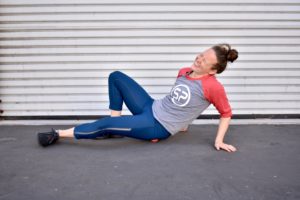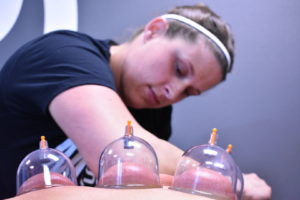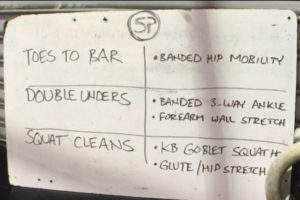As a performance specialist and fitness enthusiast. I believe safety is the absolute most important aspect of any workout. Training the body and mind can be a long and difficult process and we’re bound to hit some bumps along the way but minimizing the amount of risk in our training helps to ensure that we can train again tomorrow and the next day. Whatever your training goal, there are safety measures that can and should be applied to any situation so here are some of my best tips for finishing your workouts injury-free.
- Prepare yourself. Exercise is hard work so it is of vital importance to walk into every training session, run, bike, or class as ready as you can be. The amount of preparation and specific steps taken will depend on the type of training and how your body responds to it but some things that never change are the human body’s needs for rest, adequate hydration, and nutrition. Sleep deprivation not only impacts your energy level, and impairs your cognitive functioning, but may also prevent your body from fully recovering from previous workouts. Dehydration can impact your ability to regulate heat, cause excessive heart rate elevation, and make you more susceptible to muscle injuries. Finally, it’s important to fuel properly for a workout; this means eating some protein and carbs at least 90 minutes before you plan on training.
- Pace yourself. Self-improvement is a powerful motivator and the desire to reach the next level must be balanced with patience. Whether your goal is to run longer or faster, lift heavier, or lose weight it’s imperative that you train responsibly along the way and avoid taking unnecessary risks. This is somewhat of a vague concept so I’ll share a few examples:
Brian recently started a new lifting program that has him lifting 5 days a week as opposed to his usual 3 and at the start of his second week, he is still quite stiff and having some knee pain from the previous week. He decides to power through and on day 3 he is unable to finish over half of the workout because he is having intense knee pain during squats. After taking the rest of the week off, Brian still has trouble bending his knee so he talks to his PT and they discuss how overtraining can wreak havoc on the joints and he begins a low impact lower volume program that will help him get back to where he started in 4-6 weeks.
Kelly is an experienced runner and naval officer who recently returned from a 7-month ship deployment in the Pacific. Eager to finally get back into running, she picks up right where she left off and runs 14 miles in her first week back! The next week she starts to feel pretty sore and so she cuts down to 10 miles but during one of her runs starts to feel a sharp pinch in her foot with each stride.
Kelly and Brian’s stories are common and they show how important it is to remain patient, pay attention to how your body is responding to your training and make adjustments if necessary. Had Brian eased his way into the 5-day program by adding an additional day every 1-2 weeks he may have adjusted to the training volume a little better. Learn from Kelly’s experience and if you stop training for an extended period be sure to build back up slowly to avoid overtraining injuries.
- Do it Right or Modify it: Take the time to learn the right way to perform an exercise first with no weight or very light weight and then you can begin adding more weight or more repetitions as you get more comfortable with the exercise. Many exercise-related injuries occur from performing the exercise incorrectly or with too much weight (or both) and can easily be avoided by a quick youtube search. If you find that you can’t quite get the exercise right or do a repetition with good form then you might want to try a modified exercise. This is where you can get creative (while still being safe) and perform a similar exercise to gain strength and build-up to the more difficult exercise OR use various assistive equipment to help complete the exercise.
Here’s an example: If you can’t do a pull-up yet you have plenty of options!
- You can do banded pull-ups which utilize a large rubber band to help pull you towards the bar.
- You can try Ring or TRX rows which will help build strength in the lats, arms, shoulders, and back.
- You can try negative pull-ups or hangs from the bar that help with grip, shoulder, and back strength.
Fitness is an ongoing process that will always present you with new challenges if you keep at it. So long as you prepare yourself, pace yourself, and take the time to do it right or modify it, you will be able to face each challenge with confidence and continue training for life.
Happy Training,
Coach Alex
As always, we hope this helps! For any questions and all suggestions, please email us at TeamSP@SportsPerformancePT.com
–Coach Alex

STAY CONNECTED
Instagram: CLICK HERE
Facebook: CLICK HERE
YouTube: CLICK HERE
Podcast: CLICK HERE
TUNE IN TO OUR PODCAST













